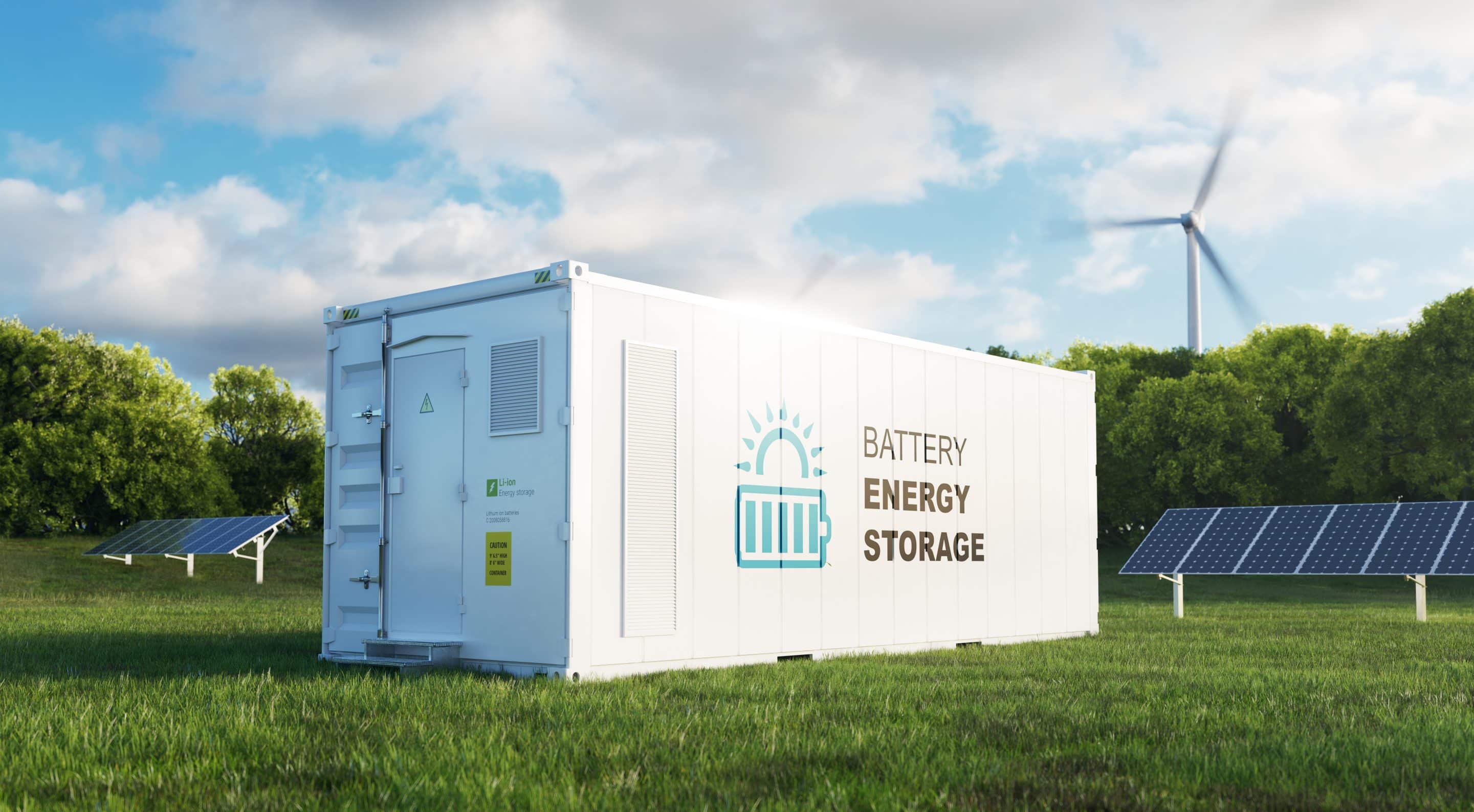11 Mistakes to avoid when choosing Residential Energy Storage System
1. Wrong battery capacity.
The battery capacity can be too small or too big, you should adjust the battery according to last year’s demand and check if the demand has not changed. As an example, with one of my clients we have chosen battery capacity, but my client prior to the installation, he bought two electric cars Audi and Porsche Tycan. The customer’s charging station has a huge impact on the increase in electricity demand. Now PV is too small and there is not enough energy for the battery charging.
Carefully analyze the energy consumption profile.
2. Wrong battery voltage.
There are several types of inverters (I will write about inverter types later) that work with batteries, but not all inverters work with all batteries! You can find single-phase inverters, most of these work with low Voltage batteries (48V). Three-phase high voltage inverters work with batteries in the range of 200V-1500V, note inverter DC voltage range varies. To match the inverter with the battery check the BAT DC Voltage range twice.
Once I have been negotiating the price of an energy storage system, and the client told me that he has a much cheaper offer, I asked him about the offer. And everything became clear, in the offer there were high voltage inverters and low voltage batteries! Such a mistake can cost you a lot of money and stress.
3. Mistaken PV DC Voltage range for Battery DC Voltage range
Notice, the battery voltage range for full load is not the same as the full power MPPT voltage range. Some inverters have a wider battery voltage range and a narrower battery voltage range for a full load.
Example: Battery voltage range 180V-800V, battery voltage range for full load 400V-800V.
4. Wrong inverter type.
Not all inverters work with batteries! The most typical solar inverters are not bidirectional and do not work with batteries!
To couple a solar inverter with a battery, you will need an AC-coupled energy storage inverter (most are single-phase). Do you have a solar inverter? It is better to replace it with a hybrid one, when you want to add a battery to your system.
To build a residential energy storage system integrated with PV you can use:
- Single-phase hybrid inverter
- Three-phase hybrid Inverter
- All-in-one storage system with an integrated hybrid inverter
- Single-phase battery inverter
- Three-phase battery inverter
- Pure Sine Wave Power microinverter
5. Inverter with no backup mode.
Not all hybrid inverters have a backup mode, some are designed only for peak-shaving and time-shifting modes. If you need backup mode check it twice.
6. Inverter with no off-grid mode
Not all hybrid inverters are on/off-grid, some work only with grid support, check it. For off-grid best are inverters designed especially for off-grid.
7. Inverter with a low off-grid output
You can separate your load into critical and normal loads, but nobody who invests in an energy storage system wants to separate the critical load into more critical and the most critical. Check the inverter off-grid output and compare it with your critical load demand. Sometimes you can get a hybrid inverter with two batteries input, check then if the full off-grid output is available with a one battery.
Do you need more off-grid output? Check the industrial hybrid inverter with a transformer.
8. Noisy inverter.
The energy storage systems should be located in a dry and warm place, you may think that the best place inside your house, but take into account that some inverters can be really loud. There is no problem with < 45 dB @1m but < 65 dB can be problematic.
9. Fast aging battery, due to high charging and discharging current.
Energy storage system specification should describe the influence of different C-rat charging/discharging and temperatures on the battery aging process. To be honest, charging C-rate is important, I know in most cases you want to charge the battery as fast as possible, but when you do it often it will probably have a negative impact on your battery aging. This is much more complicated, check the spec and learn more about C-rates in different temperatures.
more about C-rate
10. Fast-aging battery, due to low room temperatures.
Low operating temperatures <10°C may speed up battery aging, so think twice when you want to put your battery outdoors. It may have a heating system, but this heating system uses a lot of energy, what is more when the heating breaks down in winter your battery may break down too.
11. Fast-aging battery, due to poor room ventilation and high temperatures.
High temperatures of 40°C+ have a negative impact on the battery, check the ventilation, before energy storage installation. Inverters emit heat! Check it and opinions.

11 Mistakes to avoid when choosing Industrial Energy Storage System
1. Not enough space for energy storage system.
Check it before installation, battery with PCS and ByPass takes place and when you need to install more batteries. Design the location carefully with a reserve of space for cables and extra switchgear.
2. Not compatible PV inverter system.
AC Coupling may take time, check if your energy storage system is compatible with your PV inverter. If it is not compatible you have to get modbus communication frames, sometimes you have to add Network Analyzer, Energy Meter and PLC.
3. Long installation time requiring disconnection of the power grid.
Check the system installation time, on/off grid system require disconnection of the power grid for 2-6 hours.
4. Communication protocols.
Check if communication protocols are available, for a custom EMS you will need protocols.
5. DG without ZED device.
Check if your on/off grid system can work with generators, you will need ZED/ATS to have DG with PV working at the same time.
6. Long distance of the energy storage from the main switchgear.
AC electric cables (100 kW- 1000 kW+) are expensive, by limiting the distance of the energy storage from the main switchgear you will reduce costs.
Remember! For systems with back you will need two cables (or more for bigger systems): grid-ESS, ESS-Load.
7. Selection of the inverter with no backup
Not all PCS can work off-grid, you will need a ByPass for an off-grid mode, some hybrid inverters have backup mode, but not all PCS have a backup mode.
8. Battery plugs number.
Some inverters have two and more batteries with separate connections, which may impact off-grid energy output, the maximum output may be possible only with two batteries. You can find such solutions in 10kW+ inverters without a transformer.
9. Low Parallel operation inverters number.Sometimes not all inverter sizes are available and you have to install more parallel units, it may be not possible to communicate some inverters, check the manual if the parallel operation is possible and how many inverters can operate parallel.
10. The width and height of the room and door.
Energy storage system transportation to a basement can be a challenge. Check the transportation dimensions, you can disassemble the battery into modules, the bigger problem is with the inverter.
11. Inverter without required certification
Different countries have different certifications, check twice with your grid operator if you can install the selected inverter. As an example in Poland, there is NCRfG certification required and it is not a common certification in the world. Without the certification, you may not be allowed to connect your energy storage system to the grid.
11 Mistakes to avoid when choosing Utility-Scale Energy Storage System
1. Insufficient insulation, ESS self-consumption of energy.
ESS insulation affects energy self-consumption mainly in winter. The utility-Scale energy storage systems can be developed as outdoor packs, containers, or inside a building. A well-insulated building can be a good option for colder climates, to get faster Full Charge/Discharge Power Capability and lower energy consumption. Check the ESS energy demand in lower temperatures, what is more, you should check operating temperatures.
2. Energy Management System (EMS) capabilities.
Check EMS capabilities carefully, and check if you can make changes in the EMS and how much it cost. You may need special features, such as integration with an exchange, adjustable energy management, the ability to change priorities, etc. Avoid buying a system that cannot meet your expectations.
3. How to count cycles?
If you can not understand how the supplier counts cycles, than sth is wrong. You should change how the cycles add up. A full cycle can be 95% charge and 95% discharge, or 5% discharge. It is why some suppliers guarantee 15000 + cycles, check how they measure it and at what temperature.
4. DC precharge circuits.
Check how battery modules get connected in the manual, for long-term use precharge is helpful. The precharge circuit limits the inrush current, without limiting the operating current. Learn more
5. Location and possibility of flooding.
ESS Area should be adjusted to the ESS size (MWh).
Placing a utility-scale ESS near a river should be reconsidered, flooding, mechanical damage, or fires are the most destructive. What is more, it is hard to build and transport ESS on the slopes of the hill.
6. Selection of technology incompatible with VPPs.
As you know management and integration capabilities, affect the ability to generate profit. VPPs are growing and the possibility of integration with a VPP is getting more and more important.
7. A system without a black start.
Black start is used to restore a power station, or grid. To restore grid batteries are crucial, so having this function is getting more and more popular.
Learn more:
Inverter low operating altitude.
Some of my clients have guesthouses in the mountains we use special inverters there, all inverters have operating altitudes and encounter abnormal operation of the inverter in higher altitudes.
8. Grid connection.
Firstly, secure grid connection, it may be the hardest thing in countries with poor old grid and old substations.
9. Service Time.
First of all, check if the ESS service is available in your country and how long it takes. I know many PCS manufacturers and the weak link in their chains is spare parts supply, you can wait months to get a new PCS.
10. RTB Development/Lead Time.
200 MWh ESS Development in Europe can take up to 5 years, you will have to obtain many documents from the municipality, environmental protection, and network operator. Finally, you will have to make a construction project. You can buy such a project at any stage. Utility-Scale ESS Production and delivery time can exceed 2-3 years.
11. Outdated regulatory policy.
DC-Coupled PV with an ESS installed on cable pooling with a wind farm connected to a substation with HVDC transmission can be a challenge for lawmakers. Law is changing slowly and there is no precise law for energy storage in all countries. It has advantages and disadvantages for the development process. Carefully Verify ESS Certification!
ESS Certification can be temporary, check if it will be valid at the time of delivery!


